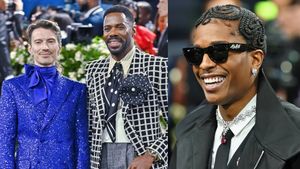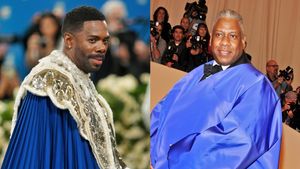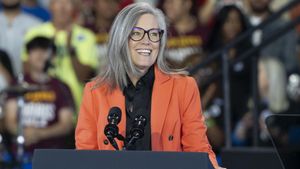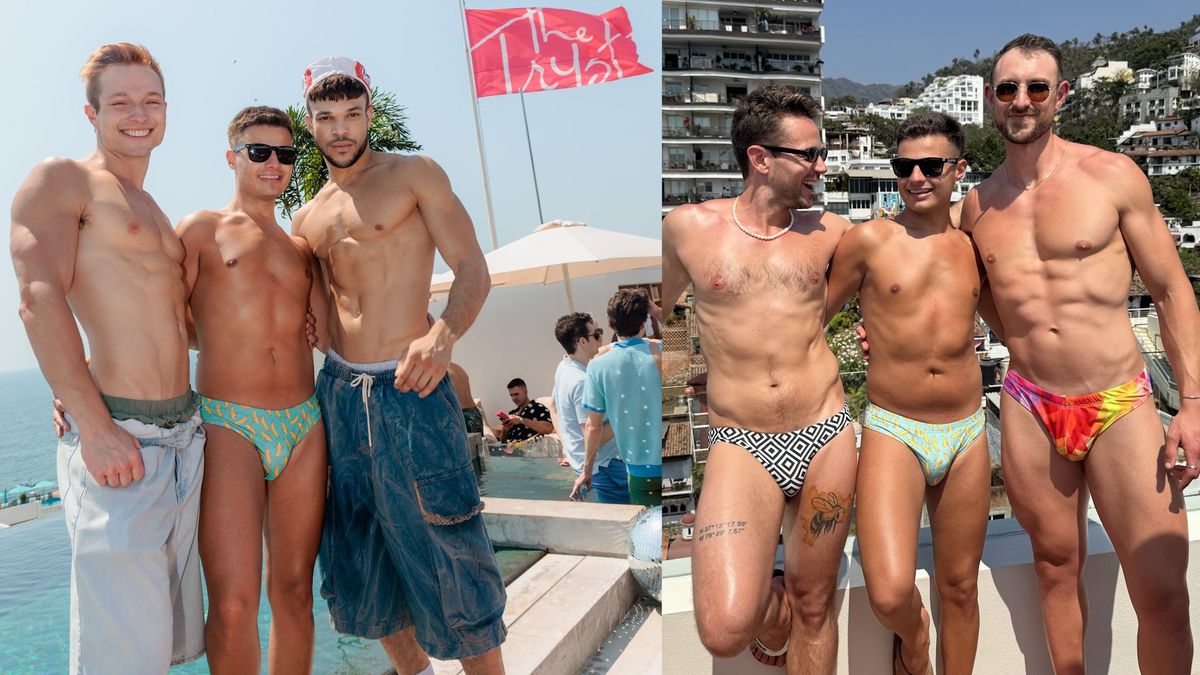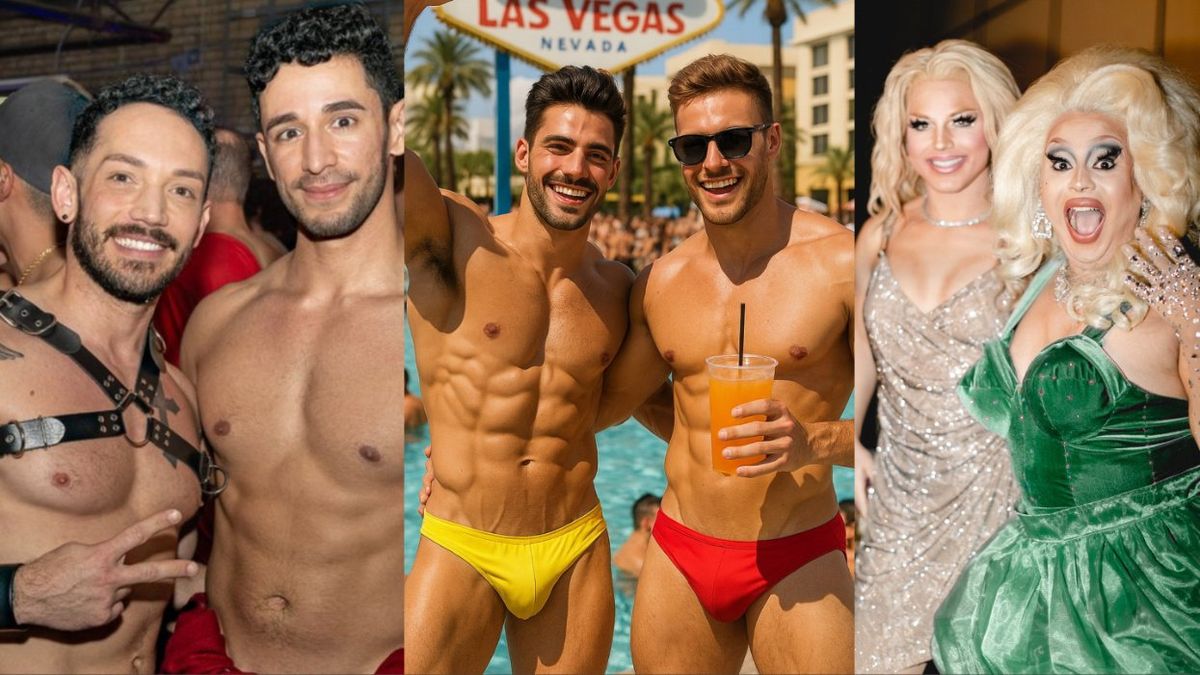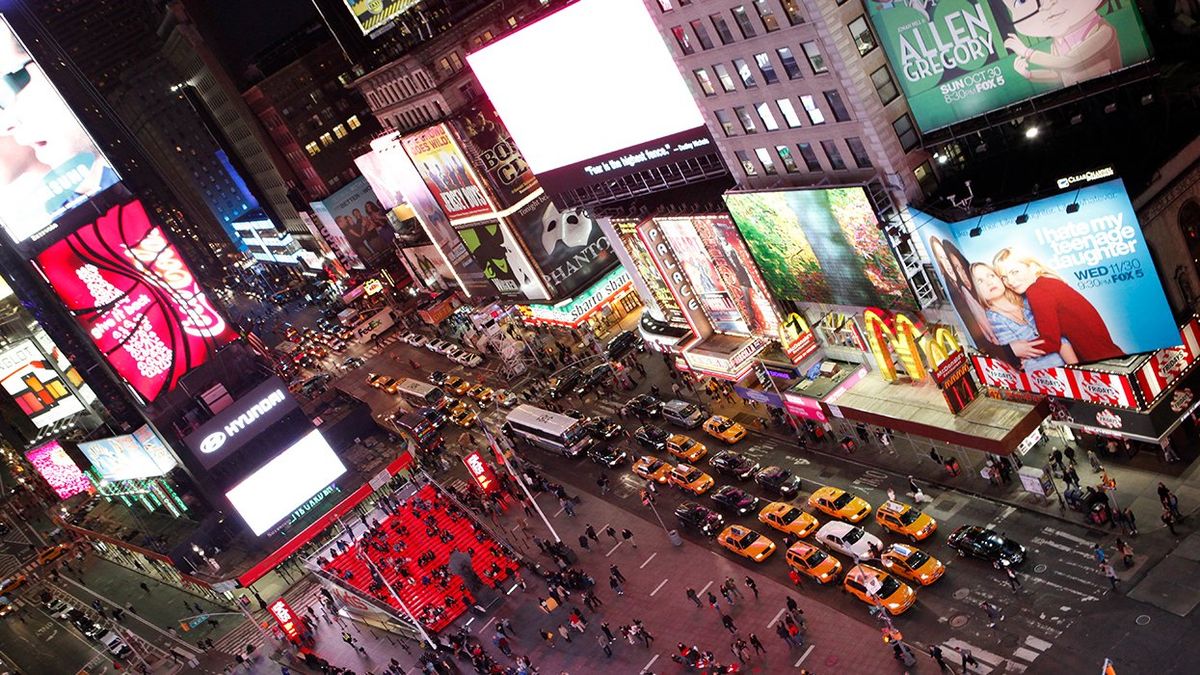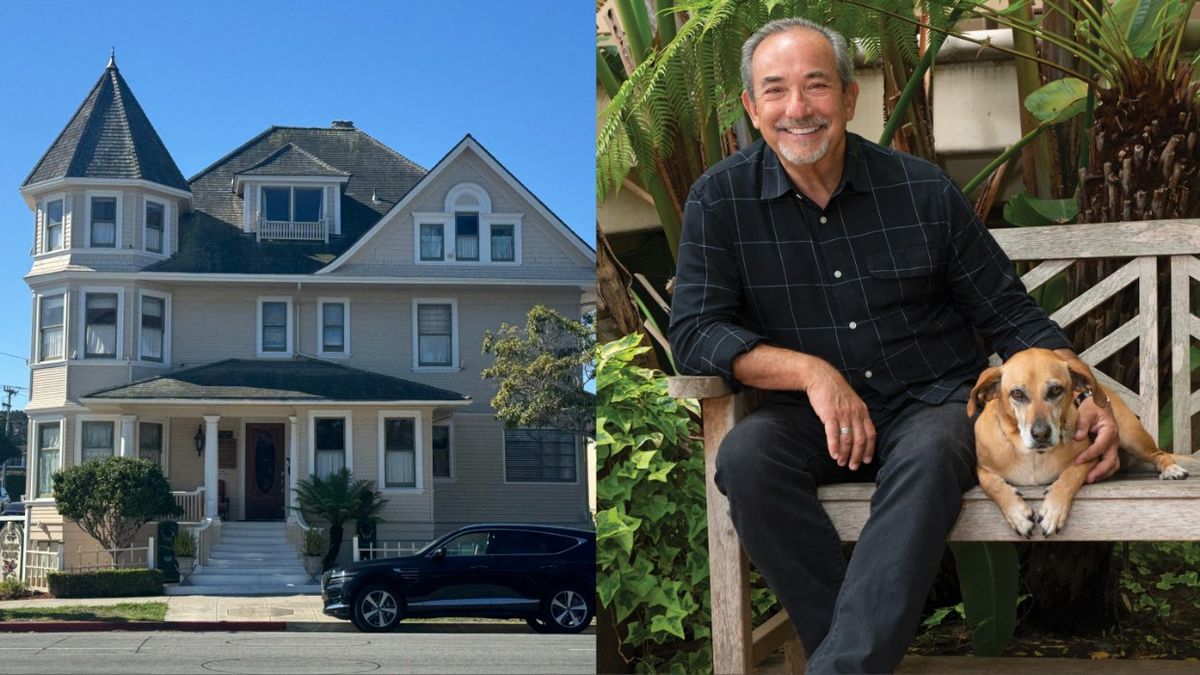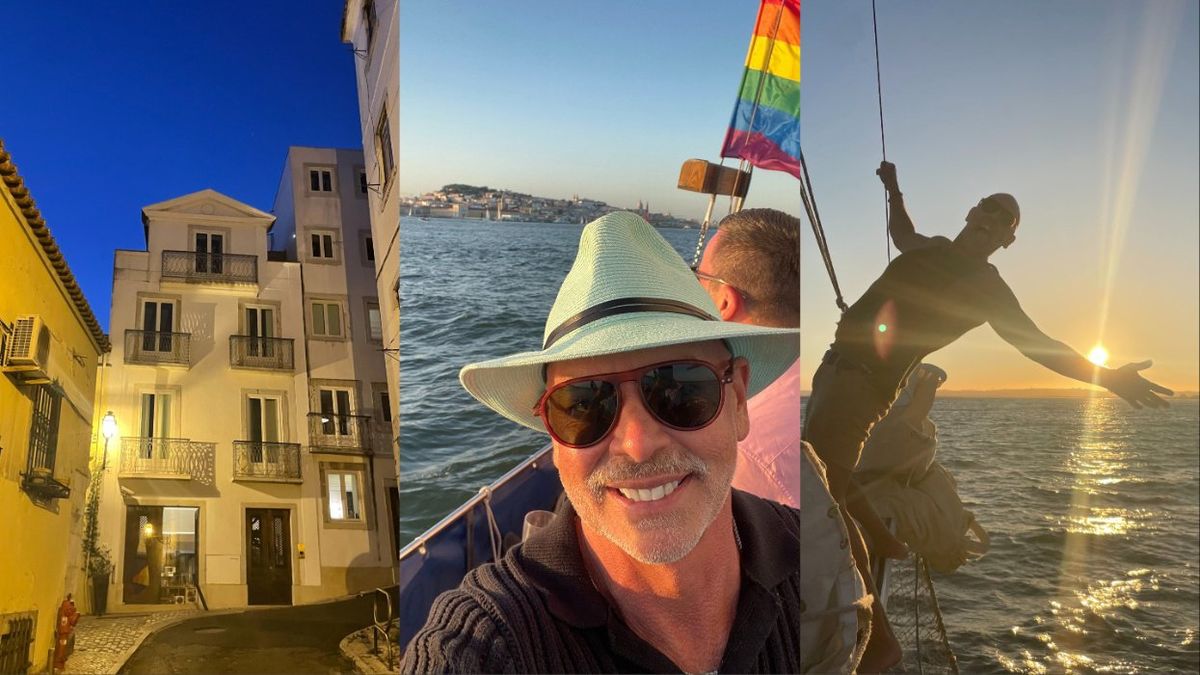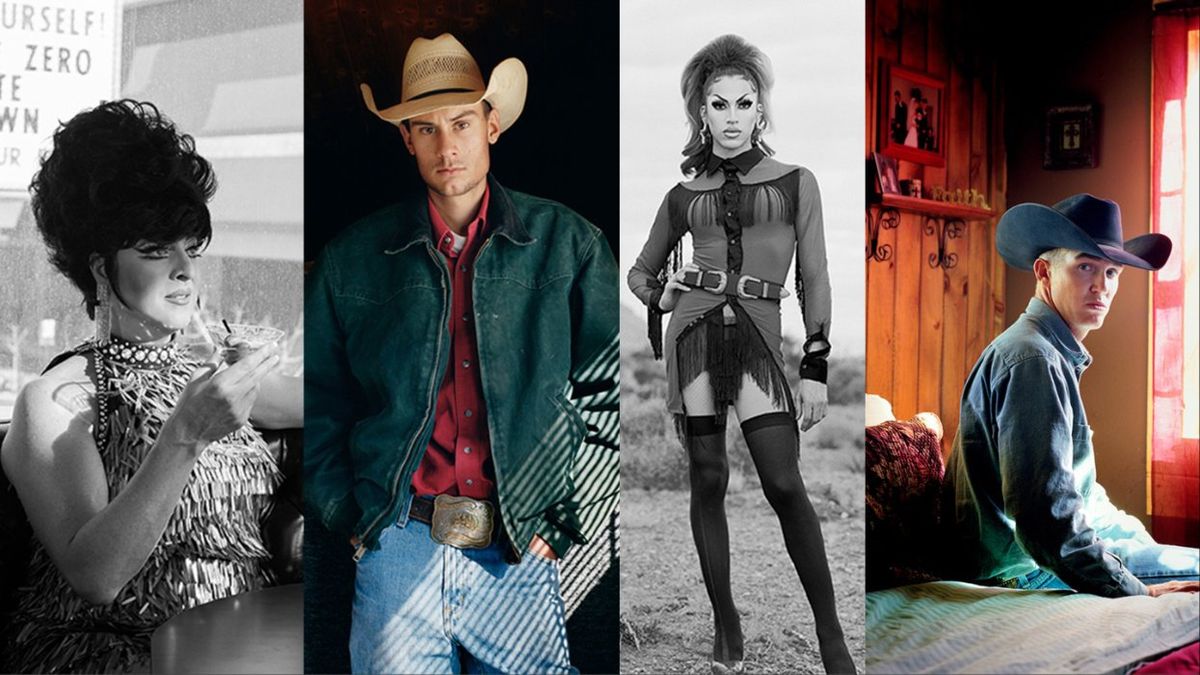Opening this weekend at the ONE Archives Gallery & Museum, "The Gay Rub" is a collection of over 100 rubbings of significant LGBT monuments, markers, and gravestones. Organized by Steven Reigns, this sweeping exhibition, which includes images that were imprinted from a concentration camp, Stonewall, and Liberace's grave, seeks to shine a renewed light on the historical importance these markers were meant to commemorate.
The opening reception of "The Gay Rub" is Saturday, February 1, 6-9pm at the ONE Archives Gallery & Museum, 626 North Robertson Blvd. in West Hollywood. The exhibition runs February 2-23. For more information, visit the Gallery's website and view a preview of the show below.
Marcel Proust (1871 –1922), French Novelist
Thaddeus Root and Desmond Clark, while visiting Paris in the winter, did a rubbing of novelist Marcel Proust’s grave for The Gay Rub.
Best known for his 3000-page masterpiece Remembrance of Things Past or In Search of Lost Time, a pseudo-autobiographical novel told mostly in a stream-of-consciousness style, Proust was active in Parisian high society during the 1880s and 90s and welcomed in the most fashionable and exclusive salons of his day. However, his position there was also one of an outsider, due to being Jewish and gay. Toward the end of 1890s, Proust began to withdraw.
Notable work: Remembrance of Things Past
Marker location: Cimetiere du Pere Lachaise, Paris, France
Gertrude Stein (1874–1946), American Novelist and Poet
Juliette Aiyana volunteered to get a rubbing from the Gertrude Stein sculpture in Bryant Park.
Known for eschewing the narrative, linear, and temporal conventions of 19th-century literature and a fervent collector of Modernist art, Gertrude Stein moved to Paris in 1903. Her home on the Left Bank was a renowned Saturday evening gathering place for both expatriate American artists and writers and others noteworthy in the world of vanguard arts and letters.
Notable works: Tender Buttons, The Autobiography of Alice B. Toklas, The World is Round
Marker location: Bryant Park, New York, NY
Hilda Doolittle Aldington (1886 - 1961), American Poet and NovelistDuring a trip to his hometown, Matthew Hittinger did a rubbing of a government-issued plaque honoring Hilda Doolittle Aldington.
Known as H.D. and for her association with the early 20th-century avant-garde Imagist group, Aldington befriended Sigmund Freud during the 1930s and became his patient to understand and express her bisexuality. H.D. became unapologetic about her sexuality and found a lifelong lover in English novelist Annie Winifred Ellerman.
Notable work: The Gift, Trilogy, Writing on the Wall
Marker location: 10 E. Church St., City Center Plaza, Bethlehem, PA
Rudolph Valentino (1895 - 1926), Italian-Born American Actor
Idolized as the “Great Lover” of the 1920s, Rudolph Valentino’s sudden death from a ruptured ulcer at age 31 caused worldwide hysteria, several suicides, and riots at his lying in state, which attracted a crowd that stretched for 11 blocks. He was rumored to have had a relationship with Ramon Novarro.
Notable works: The Sheik, Son of the Sheik, Blood and Sand
Marker location: Hollywood Forever Cemetery, Cathedral Mausoleum, crypt 1205
Ramon Novarro (1899–1968), Mexican Film and Television Actor
Tod Macofsky found himself lost in Calvary Cemetery in Los Angeles trying to locate Ramon Novarro’s grave. He met Irene Walker and her grandson Jared who helped him find the marker and then assisted in the rubbing.
Ramon Novarro began his career as a leading man in silent films in 1917. Novarro was promoted by MGM as a "Latin lover" and became known as a sex symbol after the death of Rudolph Valentino. Novarro had conflicted feelings toward his Roman Catholic religion and his homosexuality. MGM mogul Louis B. Mayer tried to coerce Novarro into a "lavender marriage," which he refused. He was romantically involved with journalist Herbert Howe, who was also his publicist in the late 1920s.
Notable works: Ben-Hur, Prisoner of Zenda, and Matahari
Marker location: Calvary Cemetery, Los Angeles, CA, Plot: Section C, Lot 586, Grave 5
Black Cat CaféFollowing World War II, this bar's clientele became predominately gay and the bar featured live entertainers, the best known of whom was José Sarria, the first out person to run for political office. The Black Cat Café, which operated from 1906 to 1921 and 1933 to 1963, is considered the nexus for gay rights movement in San Francisco.
Marker location: 710 Montgomery, San Francisco, CA
Tennessee Williams (1911-1983), American Playwright and Memoirist
Stephanie Recht grew up playing in Creve Coeur Park in St. Louis, MO. She would later discover it was the setting for a one-act Tennessee Williams play, A Lovely Sunday for Creve Coeur, about women struggling for a sense of identity and independence. She did a rubbing of Williams’s headstone in Calvary Cemetery in St. Louis.
Garnering acclaim after The Glass Menagerie was produced in Chicago and later on Broadway, Tennessee Williams won a Pulitzer Prize with his next major play, A Streetcar Named Desire. Williams wrote in detail about his homosexuality in his memoirs published in 1975: “I was late coming out, and when I did, it was with one hell of a bang.”
Notable works: A Streetcar Named Desire, Glass Menagerie, and Cat on A Hot Tin Roof
Marker location: Calvary Cemetery, St. Louis, MO; French Quarter, New Orleans, LA
Morris Kight (1919–2003), Gay Rights Pioneer
Considered one of the original founders of the gay and lesbian civil rights movement in the United States, Morris Kight was the co-founder of the Gay and Lesbian Community Service Center of L.A. (now called the L.A. Gay & Lesbian Center). Kight was also a key organizer of the West Coast's first gay pride parade in 1970, which effectively galvanized the modern gay rights movement in Los Angeles.
Marker location: Santa Monica & Crescent Heights Boulevards, West Hollywood, CA
Liberace (1919-1987), PianistSteven Reigns, founder of The Gay Rub, surveyed the park for an opulent location Liberace would have selected as a final resting place. He soon found it next to the garden area. Liberace’s signature is in wrought iron on his tomb.
Liberace gave piano concerts in flamboyant costumes with ornate pianos and candelabra, playing primarily popular music. Liberace publicly denied being gay during his lifetime and sued those who said he was. Liberace died of an AIDS-related illness in 1987. The cemetery would not disclose the exact location of Liberace’s grave or anyone of note.
Notable works: Liberace Varity Hour, Sincerely Yours
Marker location: Forest Lawn Memorial Park, Los Angeles, CA
Jose Sarria (1922–2013), American Political Activist
Previously a drag performer at the Black Cat Bar, Sarria became the first openly gay candidate for public office in the United States in 1961. He later founded the Imperial Court System, a gay rights organization.
Marker location: Harvey Milk Memorial Branch Library, San Francisco, CA
Ivy Bottini (1926), Activist
Ivy Bottini helped found the New York chapter of the National Organization for Women, only to be expelled four years later because of her lesbian identity. She founded AIDS Network LA, the first AIDS organization in Los Angeles, and the Los Angeles Lesbian/Gay Police Advisory Board.
Marker location: Santa Monica & Crescent Heights Boulevards, West Hollywood, CA
Andy Warhol (1928 –1987), American Artist Queer historical enthusiast Paula Martinac took this rubbing of Andy Warhol’s grave.
A leading figure in the visual art movement known as pop art, Warhol and his works explore the relationship between artistic expression, celebrity culture, and advertisement that flourished by the 1960s. After a successful career as a commercial illustrator, Warhol became a renowned and sometimes controversial artist. His art encompassed many forms of media, including hand drawing, painting, printmaking, photography, silk screening, sculpture, film, and music.
Notable works: Brillo Boxes, Campbell’s Soup, and Triple Elvis
Marker location: Saint John the Baptist Byzantine Catholic Cemetery, Bethel Park, Allegheny County, PA
Joseph Cino (1931 –1967), American Theater Producer and Café Owner
Performer Jason Jenn has read extensively about Café Cino and rubbed a marker honoring its founder while visiting New York.
Caffe Cino has been credited as the beginning of the Off-Off-Broadway theatre movement. Joseph Cino worked tirelessly as café host, maintenance man, server, director, and barista to keep costs low and the doors open. Cino was plagued by police harassment for licensing violations though there were no applicable licenses available.
Marker location: 31 Cornelia Street, New York, NY
James Dean (1931-1955), Actor
Christy Gillespie and her sister did a rubbing of James Dean’s tombstone when visiting their hometown. They grew up seven miles away from Dean’s gravesite. While doing the rubbing, they met Dean’s cousin who told them all sorts of amusing stories about Dean as a child.
James Dean’s image as an icon of teenage disillusionment is based on three film roles, all leading parts. He was the first actor to receive a posthumous Academy Award nomination. William Bast was Dean’s roommate in New York and revealed, later in life, that his close friendship with Dean was sometimes sexual.
Notable works: East of Eden, Rebel Without A Cause, and Giant
Marker location: Park Cemetery, Fairmont Grant County, IN
Horst Buchholz (1933-2003), German Actor Traveling to Berlin, Gay Rub founder Steven Reigns documents the headstone of Horst Buchholz.
Horst Buchholz appeared in over 60 movies and was considered the James Dean of German cinema. Though married, he had male lovers and disclosed his bisexuality at age 66. His headstone states, "Love the world and the world will love you."
Notable works: Magnificent Seven, Life Is Beautiful, and Nine Hours to Rama
Marker location: Waldfriedhof Heerstrasse Charlottenburg-Wilmersdorf Berlin, Germany
Homosexual Victims of National Socialism
Totgeschlagen/To geschwiegen/den Homosexuellen opfern des nationalsozialismus
Translation: beaten to death/to silence/the homosexual victims of National Socialism (The Nazi)
Der "rosa winkel" war das zeichen mit dem die nationalsozialisten homosexuelle in den konzentrationslagern in diffamierende weise kennzeichneten. Ab Januar 1933 wurden fast alle rund um den Nollendorfplatz verteilten homosexuellen lokale von den nationalsozialisten geschlossen oder zur anlegung von "rosa listen" (homosexuellenkarteien) durch razzien missbraucht.
Translation: The "pink triangle" was a defamatory sign the Nazis identified gays with in the concentration camps. By January of 1933 almost all of the gay places around Nollendorfplatz had been closed by the Nazis or they had been put onto “pink lists” (homosexual card files) and were abused by raids.
Marker location: Nollendorfplatz train station, Schöneberg, Germany
Paul Monette (1945–1995), American Author and Poet
Paul Monette’s work often explored homosexual relationships and the devastating effects of the AIDS epidemic. He lived in Los Angeles and is best known for his autobiographies.
Notable works: Borrowed Time: An AIDS Memoir, Becoming a Man: Half a Life Story, Carpenter at the Asylum
Marker location: Forest Lawn Memorial Park Hollywood Hills, Los Angeles. Plot: Revelation, L-3275
Sylvester James (1947 – 1988), SingerBetter known as Sylvester, a gay entertainer whose falsetto voice and drag costumes propelled him to international fame at the height of the disco dance popularity. He was often described as a drag queen, although repeatedly rejected such a description. Five of his songs became gold record hits, selling more than 500,000 copies, and one went platinum, selling more than one million records.
Notable works: "Dance (Disco Heat)," "You Make Me Feel Mighty Real" and "Do You Wanna Funk?"
Marker location: Inglewood Park Cemetery, Los Angeles, USA Plot: Pineview, Lot 816, Grave A
Randy Shilts (1951-1994), Journalist and Author
Randy Shilts was the nation’s first openly gay journalist to work on a major U.S. newspaper, The San Francisco Chronicle (he also worked at The Advocate). Shilts was at the journalistic forefront of the AIDS story. He lambasted the scientific and government bureaucracies responsible for impeding the disclosure of vital information to the public and called for increased medical research funding.
Notable works: And the Band Played On, The Mayor of Castro Street: The Life and Times of Harvey Milk
Marker location: Redwood Memorial Gardens, Guerneville, CA
Darby Crash (1958 –1980), American Punk Musician
Kris Anthony Guerra discovered the Germs at a young age. Growing up as gay punk rocker, he found inspiration from the music and life of Darby Crash and wanted Crash’s grave marker to be a part of The Gay Rub.
Born Jan Paul Beahm, Darby Crash co-founded the band Germs. Although he only appeared on a handful of singles, one full-length album, and one movie documentary during his short life, Crash left his mark on the punk rock world. He died of an intentional heroin overdose.
Notable works: Germs, Darby Crash Band
Marker location: Holy Cross Cemetery, Culver City, Los Angeles County. Plot: Section R (Resurrection) T9 115
Philadelphia Gay Rights DemonstrationsMary Rizzo and Whit Strub were determined to get a rubbing of this historic and little-known marker. They resorted to rubbing it in the evening and having to climb a ladder. Mary is pictured showing off the rubbing.
Annually on July 4, 1965-1969, Independence Hall was the site of some of the nation’s first gay rights protests before Stonewall. These peaceful, public demonstrations for gay and lesbian equality were held at helped transformed a small national campaign into a civil rights movement. Pennsylvania Historical and Museum Commission created the plaque.
Marker location: Sixth and Chestnut street, Philadelphia
The John Robert Wear Hate Crimes Memorial Plaque
This plaque was dedicated in memory of John Robert Wear and for all victims of hate crimes in June of 1992. On December 13, 1991, three men brutally attacked a group of friends as they walked down University Avenue in San Diego. The perpetrators called out "f****ts" and assaulted the group. One of the youths, John Robert Wear, was fatally stabbed.
Marker location: Hillcrest Neighborhood of San Diego
Queer Village in Protest
This five-foot-high plaque names several hunger strikers in 1991 who on two occasions occupied the grassy triangle at Santa Monica and Crescent Heights in West Hollywood to call for anti-AIDS drugs and gay rights legislation. This is also the site of the 1991 protests precipitated by California Gov. Pete Wilson's veto of a bill banning job discrimination against gay people.
Marker location: Santa Monica & Crescent Heights Boulevards, West Hollywood
Transgender Day of Remembrance MemorialThe Transgender Day of Remembrance began as a vigil recognizing transgender people killed in violent acts following the 1998 murder of Rita Hester, a transgender activist in her native Boston. Hester was stabbed 20 times in her apartment. This plaque was unveiled November 2009.
Marker location: Santa Monica & Crescent Heights Boulevards, West Hollywood
Phoenix Veterans Memorial
Patric and Levi Schine were expecting twins within a week and rushed to rub the Veteran's Memorial before their free time was consumed with fatherhood.
Arizona Rainbow Veterans created the first memorial that includes gay, lesbian, bisexual, and transgendered veterans that was placed in a National Cemetery. The officials in the National Cemetery Association accepted and authorized the memorial donation. The boulder-shaped monument of rainbow granite bears the original GLBVA logo. Dedication of the monument took place on Veterans’ Day 2000.
Marker location: National Cemetery, Phoenix
David Reed Gamboa Brandhorst
Dan Brandhorst, Ron Gamboa, and their adopted son died aboard United Flight 175, the second hijacked plane to crash into the World Trade Center on September 11, 2001. The marker is placed next to the playground where 3-year-old David use to play.
Marker location: West Hollywood Park, West Hollywood














